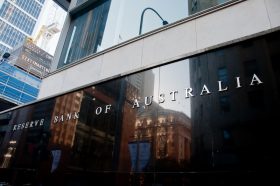

With central banks targeting short-term interest rates near zero and engaging in quantitative easing, will they resort to other monetary policy tools like yield curve control to further stimulate the economy?
Yield curve control is when a central bank targets a longer-term interest rate and then pledges to buy the required amount of bonds to keep the rate from rising above the target.
While the tactic hasn’t been used recently in North America, it has been in the past, notes Erik Weisman, chief economist at MFS Investment Management. Specifically, he notes an instance in the U.S. in the 1940s when it targeted the entire yield curve from the front end out to long bonds. In that instance, the purpose of yield curve control was to give the government a good sense of the cost of financing the war. “And it was not until the late ‘40s that the [Federal Reserve] started to release control, little by little, of the curve, starting with the front end and eventually by 1951 or 1952 . . . letting the whole curve go.”
Japan currently uses yield curve control and has been targeting the 10-year part of the curve for several years, Weisman says. “The benefit of potentially targeting the 10-year further out the curve rather than something close to the front end is it does allow you to control, to a great degree, much of the curve. The policy rate is going to anchor the very front end and then the yield curve control target is going to anchor the 10-year and, as a result, twos, threes, fives, sevens, nines, are all going to be kind of anchored as well, as will — to some degree — 11s and 12s and you don’t really lose control of the curve until you get out to, let’s say, 15s or longer.”
Australia also recently went down the yield curve control path, specifically targeting the three-year part of the curve through a yield cap at 25 basis points.
Yield curve control can work hand in hand with forward guidance, Weisman says. “If you really wanted to implement forward guidance, with perhaps a little bit more of an emphasis, you could do what the Bank of Australia is doing. Not only would you say, ‘We feel very confident. We will not be raising rates in the next three years and to prove it to you we will put a 25-basis point yield cap at the three-year part of the curve.’ I think that sends even a stronger message that forward guidance is what they say it is and that can gain you credibility and keep that front end of the curve exactly where they want it.”
A central bank can also use yield curve control alongside quantitative easing if it doesn’t want its balance sheet to balloon up too much. “And this allows the potential for buying a lot less, but still being able to credibly target a point on the curve.”
Further, if the government is going to run deficits and issue a large amount of debt that — all else being equal — will pressure yields to rise, Weisman says. “But if yields go too much higher then that can undermine animal spirits and result in much weaker growth and perhaps weaker inflation, undermining the longevity of a business cycle. And the Fed then might deem that it needs to implement yield curve control, so that yields stay lower than they would otherwise.”
While one can argue that yield control isn’t currently required in the U.S., he says he wouldn’t be surprised to see it used in the future because it’s unclear how many more levers exist to push and pull. “They could decide to cut rates to negative interest rates, but I think the lessons that we think we’ve learned about that are such that most central banks, I think, are hellbent on not cutting rates into negative territory. I think central banks can probably try to continue to be creative, but I think they’re running out of runway.
“And yield curve control would be one powerful tool that they still have left that’s not outrageous that might still be considered conventional. And should they need to use it, I think, very few central banks would be reticent to do so.”
